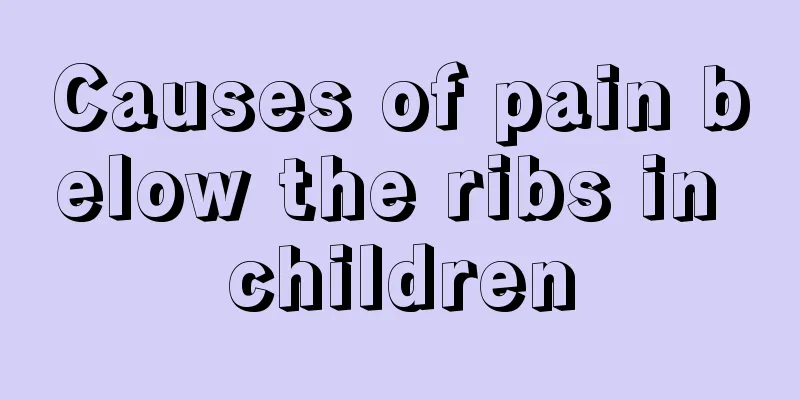Causes of pain below the ribs in children

|
Children generally have low physical fitness, and they are prone to injuries during playing and fighting. This may cause children to experience frequent pain under the ribs. In this case, you need to find out the cause of your illness first, because this situation may be caused by multiple diseases. Some chest diseases are more serious and require more attention. Costal neuralgia is also called intercostal neuralgia. Intercostal neuralgia is a group of symptoms that refers to the damage of the thoracic nerve roots (i.e., intercostal nerves) due to various reasons, such as thoracic vertebrae degeneration, thoracic vertebrae tuberculosis, thoracic vertebrae injury, thoracic vertebrae dura mater, tumors, ankylosing spondylitis and other diseases or rib, mediastinum, and pleural lesions. The intercostal nerves are compressed and stimulated by the above diseases, and an inflammatory reaction occurs, resulting in a syndrome with band-like pain in the chest, intercostals or abdomen. Intercostal neuralgia is divided into secondary and primary types. Radicular intercostal neuralgia may be caused by diseases such as thoracic vertebra degeneration, thoracic vertebra tuberculosis, thoracic vertebra injury, thoracic vertebra dura mater, tumors, ankylosing spondylitis, etc.; axial intercostal neuralgia may be caused by lesions of the ribs, mediastinum or pleura. Primary intercostal neuralgia is rare. When intercostal neuralgia occurs, pain can be seen radiating from back to front along the corresponding intercostal space in a semicircular shape; the pain is stabbing or burning. The pain gets worse when you cough, take a deep breath, or sneeze. The pain is usually in one nerve on one side. Physical examination revealed obvious tenderness beside the spinous processes of the thoracic vertebrae and in the intercostal spaces; patients with typical radicular intercostal neuralgia had a positive neck flexion test; the distribution area of the affected nerves often showed signs of neurological impairment such as hyperesthesia or hypoesthesia. Treatment should identify the primary lesion and adopt appropriate treatment methods. You can use medication, physical therapy, acupuncture, massage, etc. Massage is clinically effective in treating intercostal neuralgia caused by thoracic vertebrae injury or degeneration. This type of patient often has abnormal position of the thoracic spine joints. After correction through thoracic spine reduction technique, the pain can be significantly relieved. Diseases in the thoracic spine should be treated promptly to avoid secondary intercostal neuralgia. Seated workers should pay attention to correct posture and avoid fatigue. |
>>: Diet therapy for night sweats in children
Recommend
How to supplement iron for children
As children grow up, they cannot do without iron,...
Which department should I consult for precocious puberty?
Precocious puberty is a common problem that often...
Newborn baby not urinating
In fact, the urination and defecation conditions ...
Diet therapy for three-month-old baby
Some parents will find that their three-month-old...
Can children's meningitis be cured?
Meningitis refers to inflammation of the meninges...
What should I do if my baby has facial allergies?
The baby's skin is relatively fragile and eas...
What should mothers eat if their newborns have constipation?
There are many benefits for newborns to be fed ma...
What are the consequences of a baby's enlarged gallbladder at birth?
In order to understand the baby's development...
What are the reasons why babies sweat a lot when sleeping?
The baby's health affects the entire family. ...
What to do if your child has red eyelids
As children grow up, they will often suffer from ...
What should I do if my baby has a fever of 41 degrees?
It is a common situation for babies to have a fev...
What to do if your child has a fever and cough
Almost every parent has encountered symptoms of t...
Beware of children being dazed
Usually, people may not pay much attention to the...
What to do if a child has enlarged nasal conchae
There is probably only one child in every family ...
Can a three-year-old baby pick earwax? How to clean earwax for a three-year-old baby
Many mothers are accumulating experience in takin...









